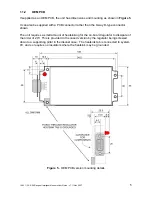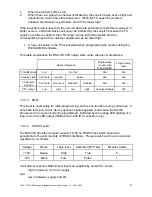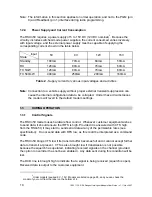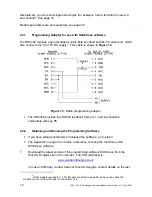
1
Older models required 9V - 15V. Models are listed on page 28, and you can check the
model of your unit from the label on the bottom of it.
6
1892 1139 - RSX Range of Intelligent Modems User Guide - v7.1 / Nov 2007
1.2
CONNECTIONS
The antenna connects by means of a 50
O
BNC connector on the standard unit. A 200mm
coaxial flying lead is supplied with the OEM PCB.
All other connections to the unit are made via a male 9-way D-type connector (optionally a
10-way IDC connector on an OEM PCB), incorporating a serial interface, supply input and
a remote on/off control. This interface is used for three separate functions: radio
programming, modem programming and normal operation.
If you are using a computer which has no serial port, see the Appendix on page 31 for
USB to serial adaptors.
A power supply of 5 to 15V DC is required
1
. The current drawn depends on the supply
voltage and unit activity as shown on page 10.
The remote on/off (Enable) input must be held low (0V) when the unit is to operate. At
other times, it can be held high (+2V to supply positive) to reduce the supply current to a
very low level (‘sleep mode’), for example where power is supplied from a battery.
1.2.1
Connections to Customer Equipment
The diagrams in
Figure 6
and
Figure 7
show the connections for the standard version
and the IDC header option (OEM PCB versions only) respectively.
Figure 6
- 9-way D-type connector
Figure 7
- 10-way IDC connector
v
Note that if there is no remote on/off,
EN
must be linked to 0V in order for the radio
modem to function.







































